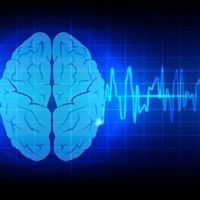Article
Adding Telemedicine Helps Mobile Stroke Treatment
Author(s):
Cleveland Clinic had success with adding telemedicine to the operation of its mobile stroke treatment unit. The change could potentially reduce costs of operating the unit.

A mobile stroke treatment unit (MSTU) combined with telemedicine has a low rate of technical failure and could offer a feasible way to reduce the high cost of using MSTUs, according to a recent study published in JAMA Neurology. Ahmed Itrat, MD, of the Cerebrovascular Center at Cleveland Clinic in Cleveland, Ohio, and colleagues conducted the study in order to “test whether telemedicine is reliable and remote physician presence is adequate for acute stroke treatment using an MSTU.
The faster a person experiencing an acute stroke is treated, the better the outcome. MSTUs can reduce the time to treatment, and often include an ambulance equipped with a computed tomography (CT) system, as well as a neurologist and other personnel trained in treating stroke. However, such systems are expensive. In Cleveland, Ohio, an MSTU system relies on telemedicine, and the researchers set out to discover whether or not the remote presence of expertise is as effective as systems that include having a neurologist on-site.
Cleveland Clinic's MSTU, which became operational on July 18, 2014, includes a mobile CT system, and a staff consisting of “a registered nurse, paramedic, emergency medical technician, and a CT technologist.” When the MSTU is deployed, a “vascular neurologist evaluates the patient via telemedicine, and a neuroradiologist remotely assesses images obtained by CT.” The unit is active 12 hours a day, 7 days a week.
The researchers prospectively collected data, “including demographics, time of stroke call, time of arrival to the scene, time of patient entry into MSTU, video log-in and log-out times, time of CT and laboratory testing, time of arrival to the hospital, and time of IV-tPA treatment, where applicable.” The comparison data was collected from emergency departments (EDs) in the Cleveland Clinic health system.
During the initial phase of the study, 100 patients were evaluated for stroke in the MSTU; successful telemedicine encounters occurred for 99 of those patients. One did not because of power supply problems. Also, 99 patients underwent noncontrast head CT in the MSTU; one did not “because of hemodynamic instability requiring advanced cardiac life support.” Sixteen patients received IV-tPA in the MSTU.





